
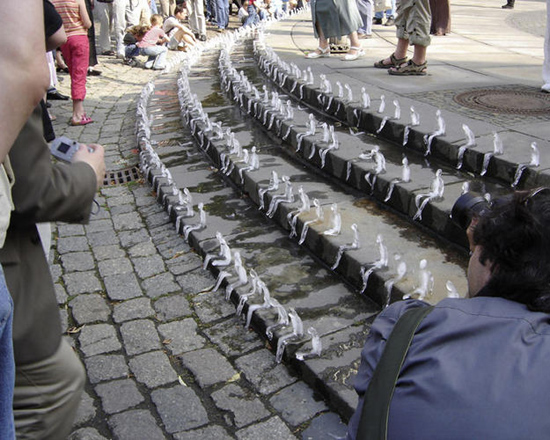
‘Melting men’ by Nele Azevedo

Work from ‘Salutary plank’ (2010) by Sofia Leiby
Screenprint on found book page.
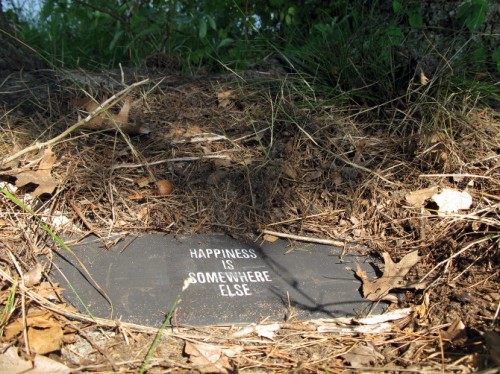
‘Salutary Plank’ is a modest memorial ‘plaque’ installed at Ox-Bow School of Art commemorating the absence of happiness in a specific domain, or, the infeasibility of nostalgic fulfillment in the modern “natural” landscape.

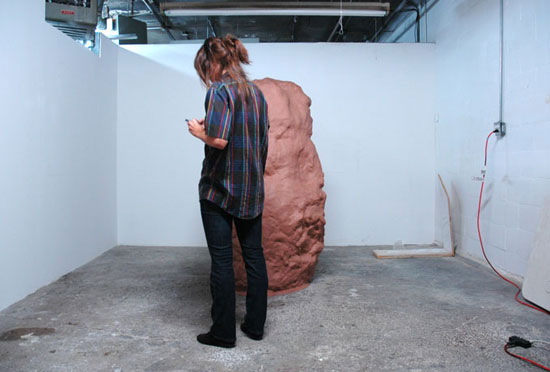
Stills from ‘Live feed’ by Erin Shireff
In Shireff’s online project Live Feed (2007–ongoing) we can watch her walking around a vaguely human-shaped mound of clay that dominates her tiny studio. Though this is supposedly a ‘live feed’ of artistic creation, despite Shirreff’s constant movement the clay monolith lies inert, failing to take shape as a sculpture.

Sonja Vordermaier, ‘Streetlampforest’ (2010)
‘Streetlampforest’ is a collection of 30 european streetlamps from different origins and times (Amsterdam, Berlin, Erfurt, Leipzig, Glasgow, Innsbruck, Milano, Hamburg, Prag, Cagnes-sur-mer (France), Sarajevo, Stuttgart, Belgrade, Lippstadt, Munich, Sofia, Trieste,Wolfsburg and Vienna).
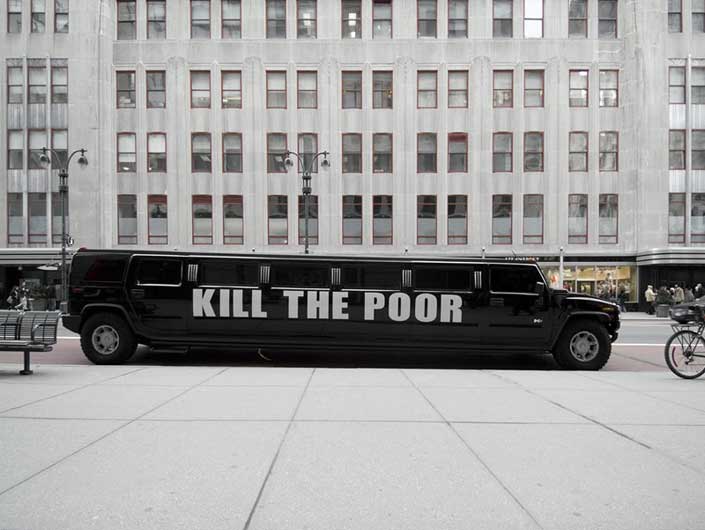
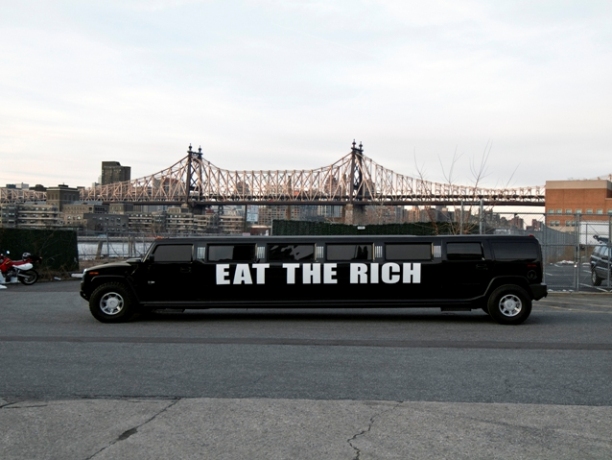
DEMOCRACIA, ‘Eat the rich/Kill the poor’ (2010)
Intervention on a hummer limo for transportation of collectors and art lovers during Armory Show 2010, New York. (Photos by Rodrigo Pereda)

Michael Asher, ‘Think small’ (2010)
Asher’s piece is a reproduction of a 1959 print advertisement designed by Doyle, Dane, and Bernbach for the marketing of Volkswagen in the United States. “Think small” was the tagline in the ad and it became the concept of the campaign. Asher’s piece performs a kind of time travel, stretching back a half a century and replaying a historical campaign for our present consideration. When the “Think small” ads came out, America was firmly committed to a post-war economy perpetuated by the rapid growth of consumerism. Going against that grain, the “Think small” message encouraged investment in a reliable, affordable car rather than an oversized, flashy one. Visually and linguistically, the message of the campaign was to consume less, not more. Yet the ad’s critique of big consumerism performed well for corporate capitalism: many cars were sold, and the ad itself is credited with creating a sea change in the way advertising is created.
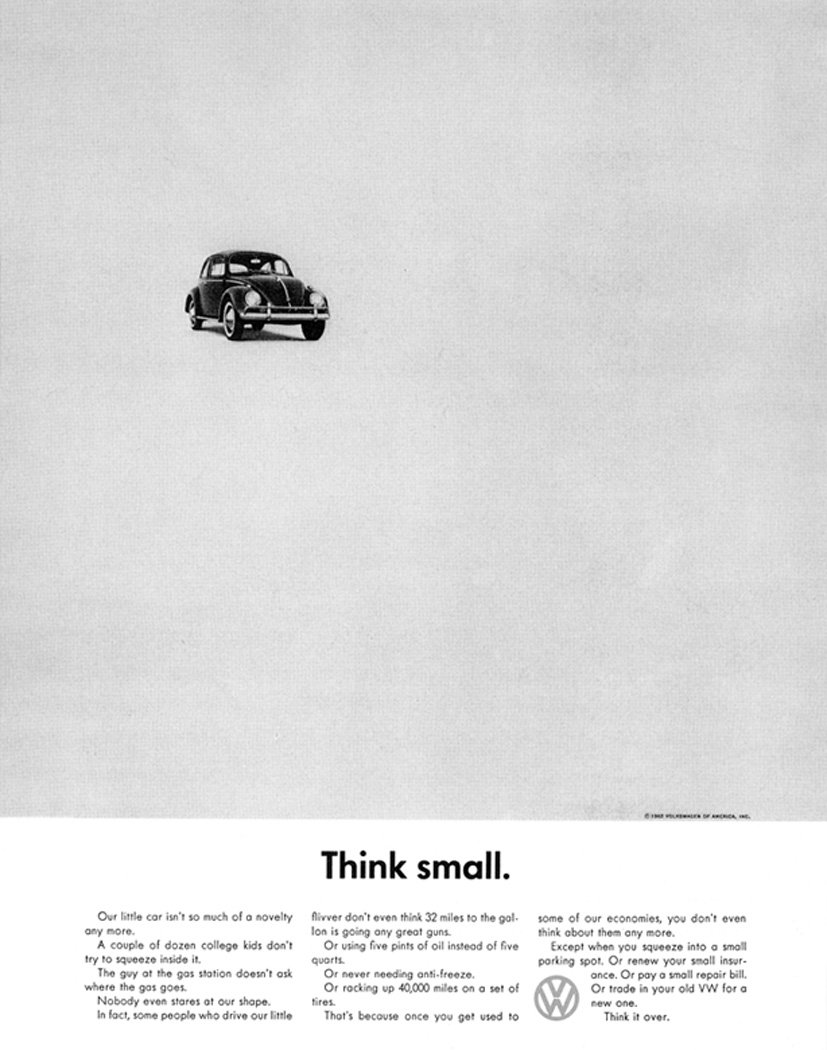
(the original ad – right-click and ‘view image’ for enlarging)